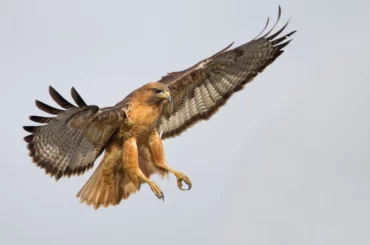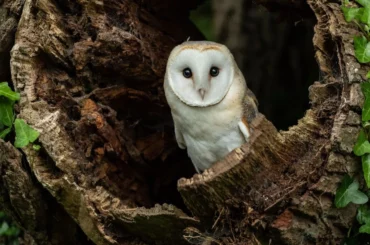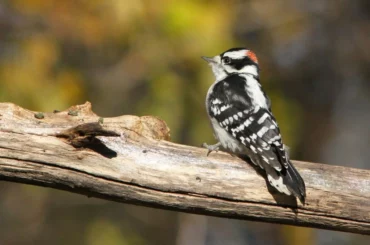Finches are large, colorful songbirds that adore being the center of attention. These superb singers, considered non-migratory birds, like sites in the temperate zone. They like to stay in dry environments, like forested grasslands, or areas near watercourses because that is their natural habitat.
Taking note of these inclinations, a little marvel finch in Texas is abundant. There are well-known varieties of finches in Texas that attract a lot of interest from enthusiastic bird watchers and nature enthusiasts.
1. House Finch
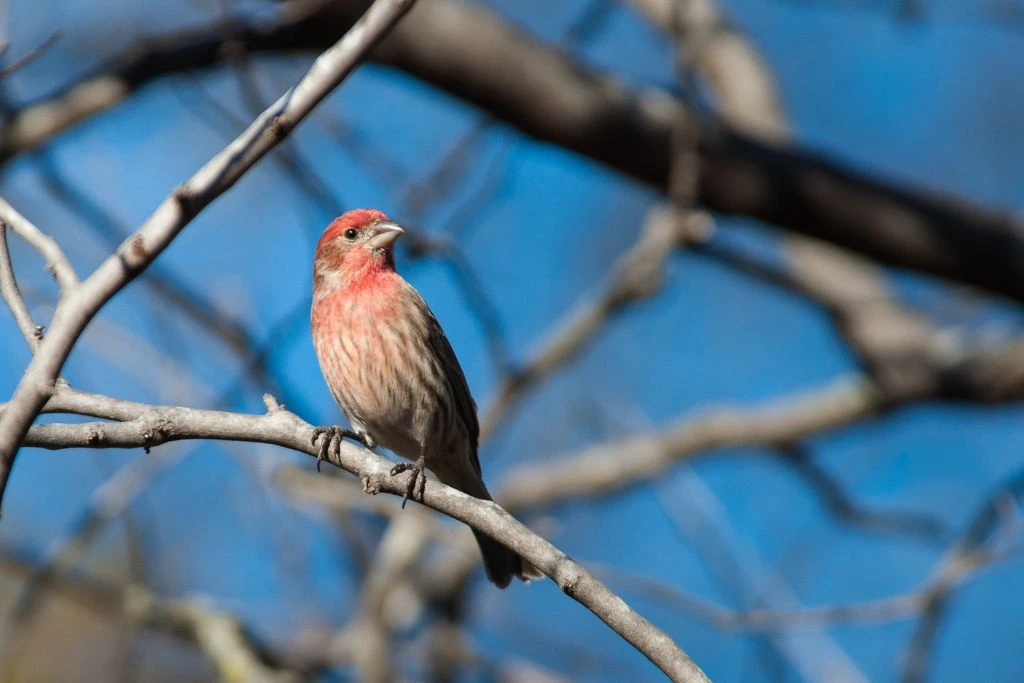

- Kingdom: Animalia
- Phylum: Chordata
- Class: Aves
- Order: Passeriformes
- Genus: Haemorhous Swainson
- Species: Haemorhous mexicanus
- Length: 5.1-5.5 in (13-14 cm)
- Weight: 0.6-0.9 oz (16-27 g)
- Wingspan: 7.9-9.8 in (20-25 cm)
Although the house finch can be found across Texas, it is most common throughout the Panhandle, Central, and West Texas. The rosy red face of this vibrant, versatile bird, native to the Southwest, is frequently spotted in backyard feeders throughout the country. You might find it on the pavement or perched high in adjacent trees when it is not at feeders. Deserts, plains, and open woods are its natural habitats, although it also frequents farms, parks, and backyards.
They are mainly prevalent in the state’s western regions. The house finch mostly consumes plant material, such as seeds, buds, and fruits. It is also among the simpler birds to draw. It prefers lots of water, black sunflower seeds, and tube feeders with basking areas.
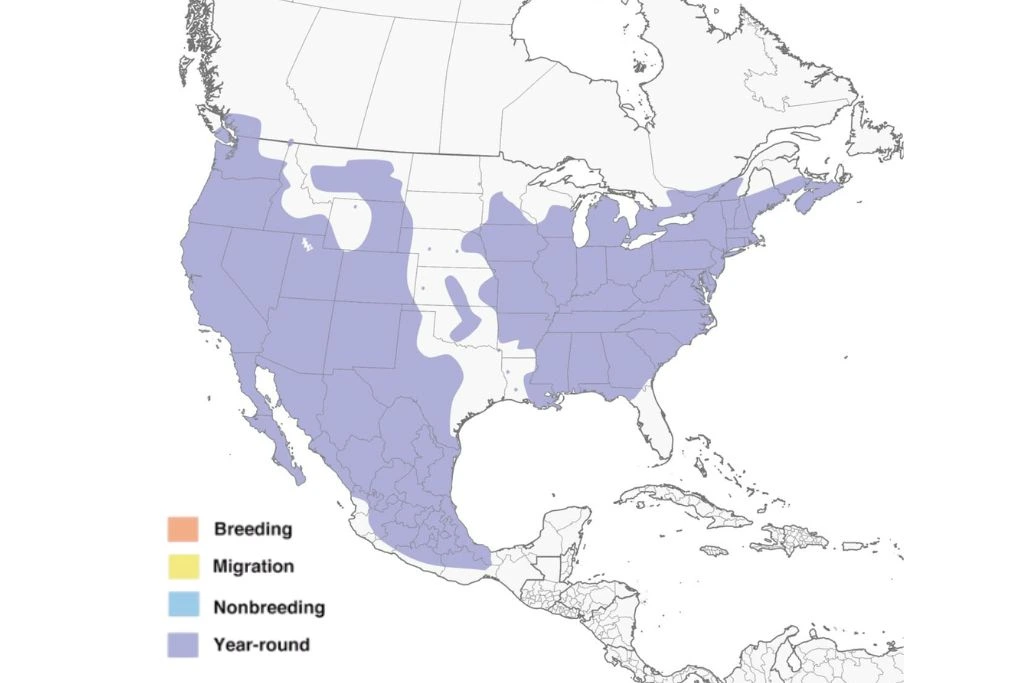
2. Rose-Breasted Grosbeak
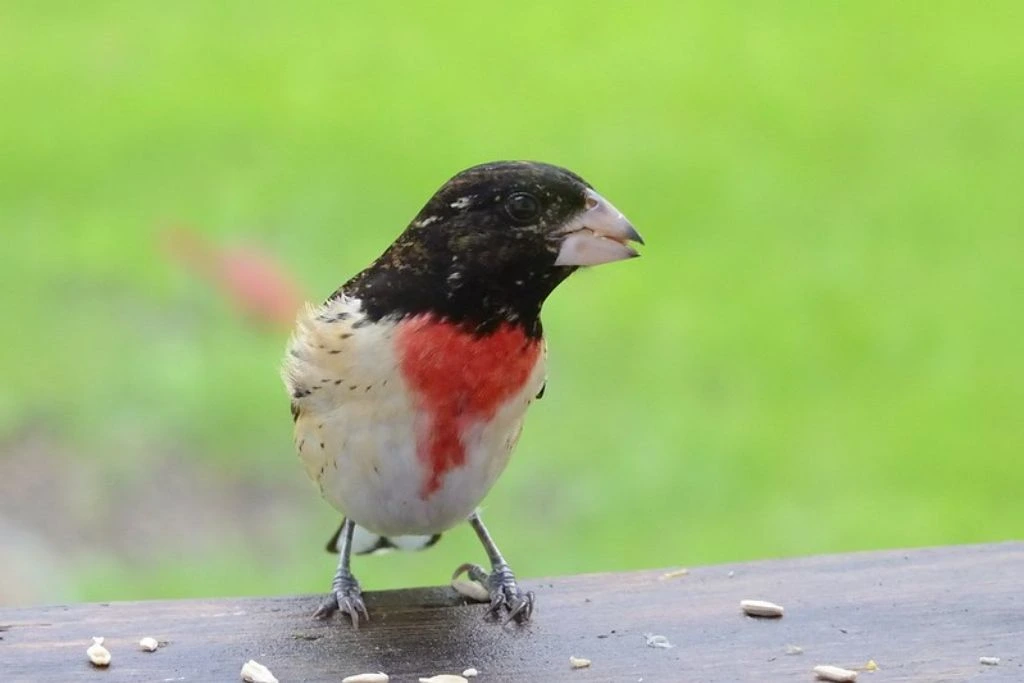
- Kingdom: Animalia
- Phylum: Chordata
- Class: Aves
- Order: Passeriformes
- Genus: Pheucticus Reichenbach
- Species: Pheucticus ludovicianus
- Length: 7.1-8.3 in (18-21 cm)
- Weight: 1.4-1.7 oz (39-49 g)
- Wingspan: 11.4-13.0 in (29-33 cm)
Late in the spring, as they go north to breed, rose-breasted grosbeaks pass through all the central and eastern parts of Texas. During migration, these birds can frequently be found in fruiting trees, which helps sustain their lengthy voyage. During the winter, they hide out in the treetops of lush woodlands. The sweet symphonies of rose-breasted grosbeaks, which resemble American robins, can be heard in the spring and summer. Their other calls consist of quick, piercing “eek-eeks” that sound like a shoe squeaking.
Male rose-breasted grosbeaks sing to draw in females and establish territories. Sometimes the male plays hard-to-get when the female shows up, resisting her for a day or two until finally acknowledging her as a mate. Plant lots of plants that enjoy insects and provide big tube feeders packed with black oil sunflower seeds to draw in these finches in Texas.
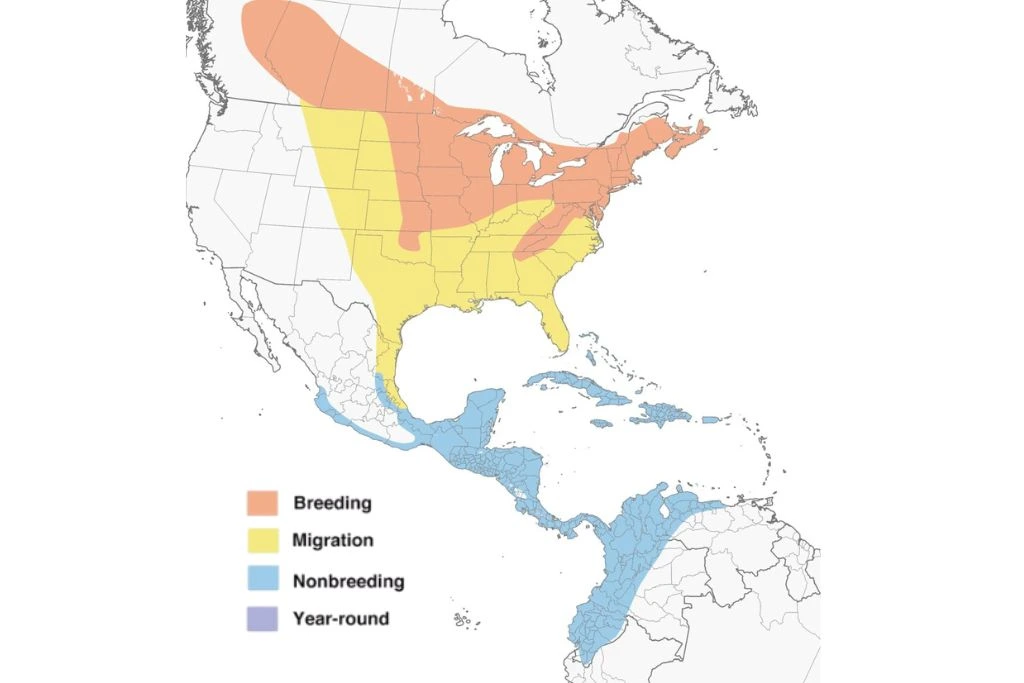
3. Blue Grosbeak
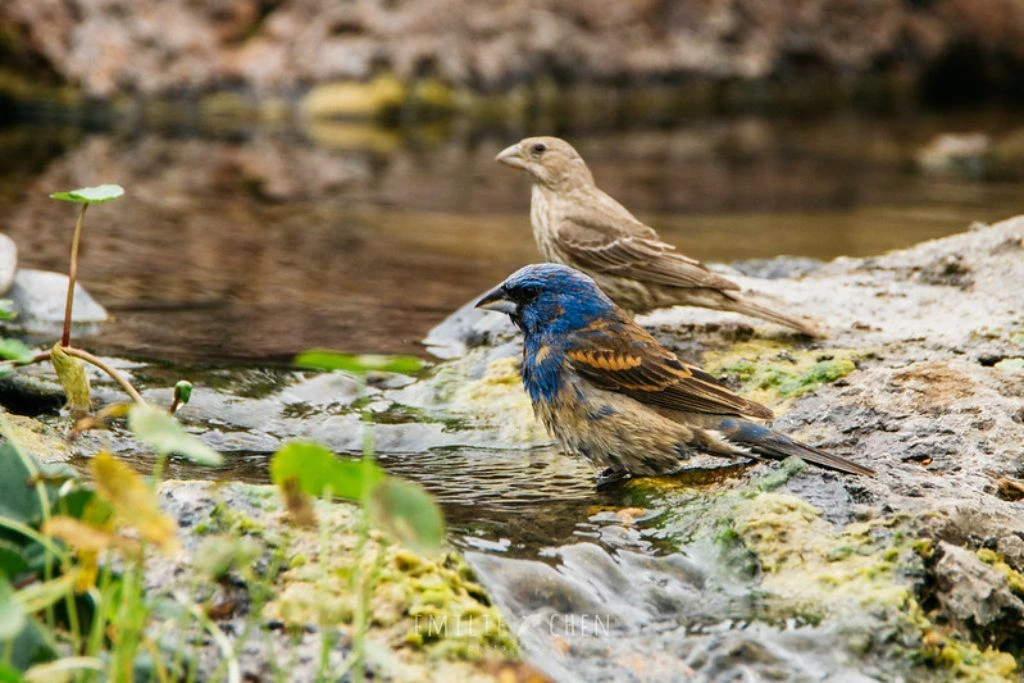
- Kingdom: Animalia
- Phylum: Chordata
- Class: Aves
- Order: Passeriformes
- Genus: Passerina Vieillot
- Species: Passerina caerulea
- Length: 5.9-6.3 in (15-16 cm)
- Weight: 0.9-1.1 oz (26-31 g)
- Wingspan: 11.0 in (28 cm)
Blue grosbeaks are often seen throughout Texas during the spring and summer breeding seasons. These quiet birds have a dark blue color and a sideways flick to their tail. During the warm months, they perch among the thickets in Southern states, making loud, metallic clinking noises that are well known.
They frequently reproduce in Texas in regions with shrubs, a few large trees, or plants near streams. Like all finches, they consume seeds and insects; during the summer, they consume more beetles, larvae, and other insects. Blue grosbeaks, like most finches, are drawn to yards with bushes, robust feeders, cherries, and black oil sunflower seeds.
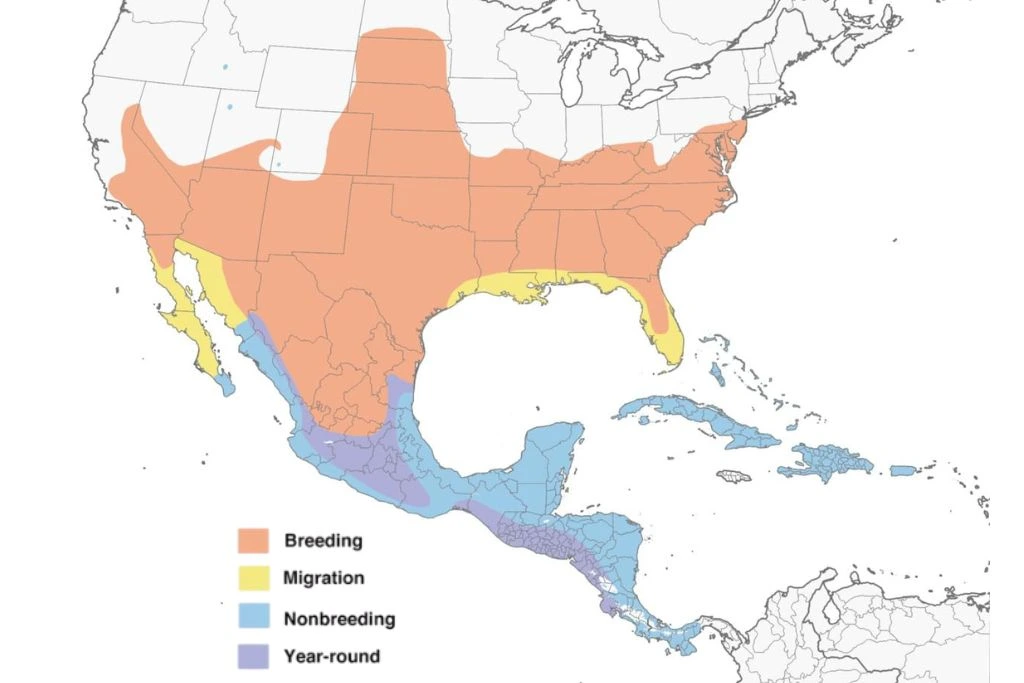
4. Black-Headed Grosbeak
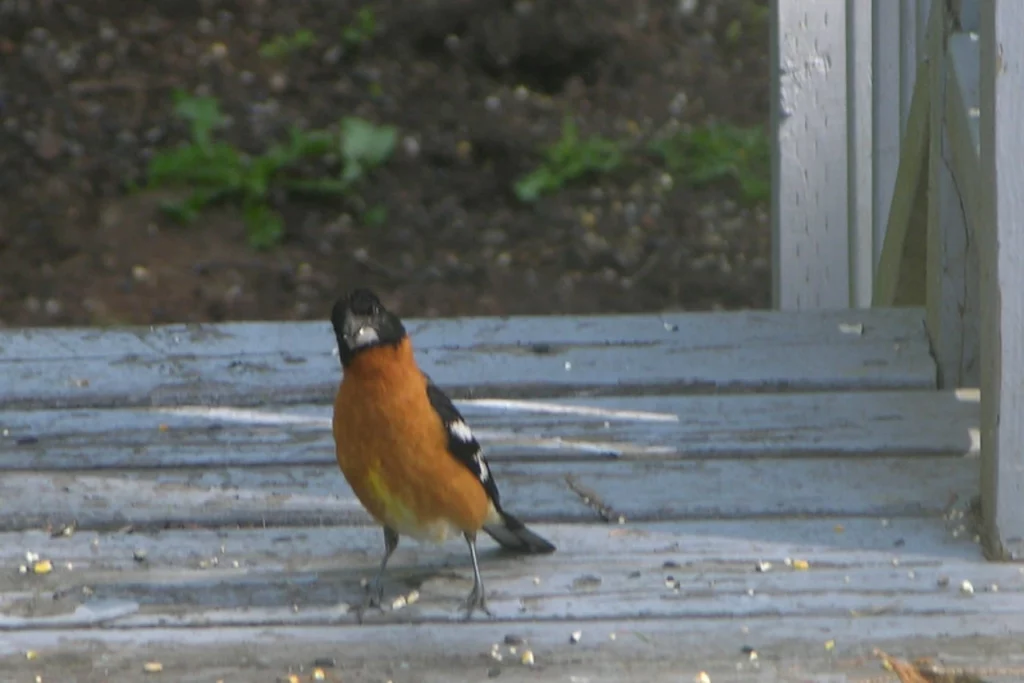
- Kingdom: Animalia
- Phylum: Chordata
- Class: Aves
- Order: Passeriformes
- Genus: Pheucticus Reichenbach
- Species: Pheucticus melanocephalus
- Length: 7.1-7.5 in (18-19 cm)
- Weight: 1.2-1.7 oz (35-49 g)
- Wingspan: 12.6 in (32 cm)
The eastern half of Texas is where black-headed grosbeaks migrate to breed up north. The males’ lovely, rich warbles can be heard singing in the spring, making it simple to find them. As they fly overhead, keep an eye out for the females’ vivid yellow underwings.
This bird may live in various habitats, including backyard gardens, mixed woodlands, mountainous forests, and desert streams. They could be difficult to notice as they hop through dense vegetation, searching for food, including insects, seeds, and berries. By positioning a hopper-style seed feeder next to suitable perching areas, you can draw the attention of this vibrant orange bird.
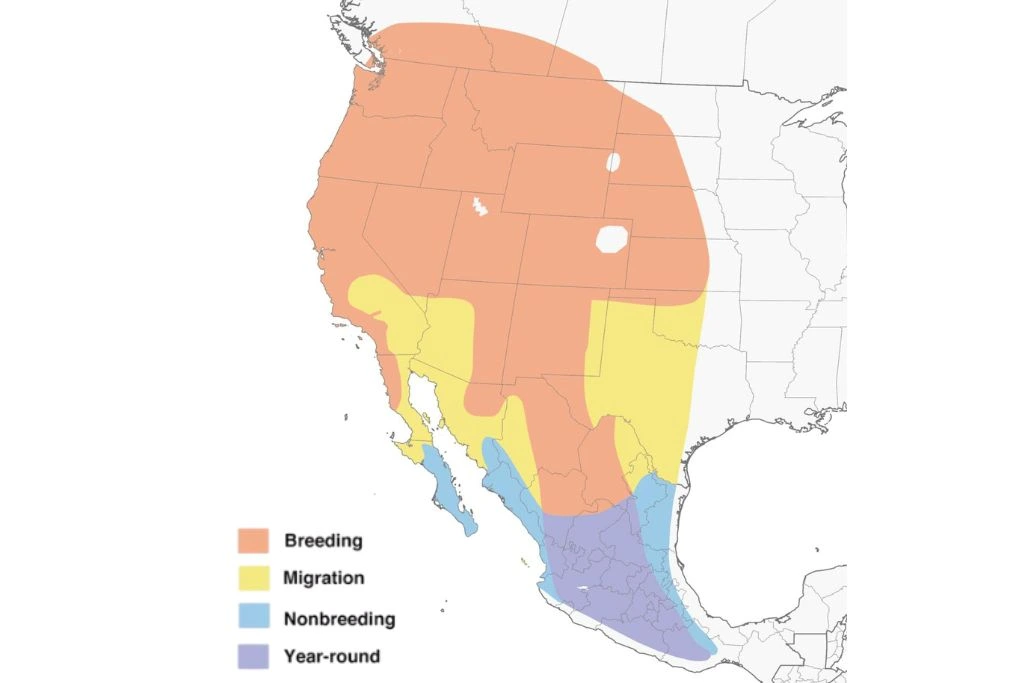
5. Evening Grosbeak
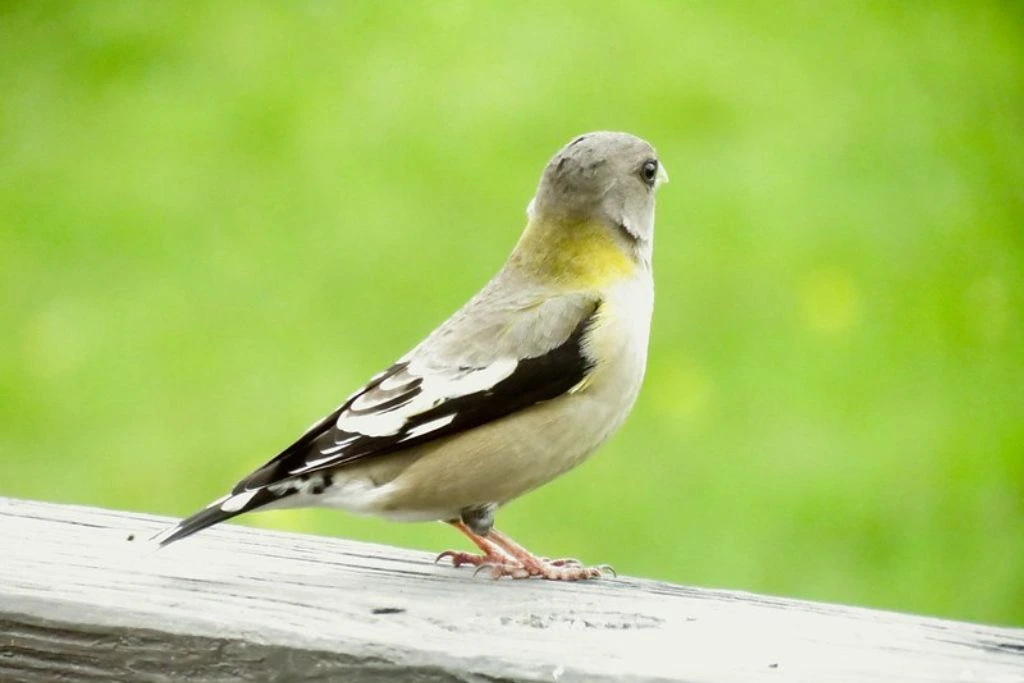
- Kingdom: Animalia
- Phylum: Chordata
- Class: Aves
- Order: Passeriformes
- Genus: Hesperiphona Bonaparte
- Species: Hesperiphona vespertinus
- Length: 16 to 22 cm (6.3 to 8.7 in)
- Weight: 38.7 to 86.1 g (1.37 to 3.04 oz)
- Wingspan: 30 to 36 cm (12 to 14 in)
Although it is uncommon to see these bright, large-billed finches in Texas, evening grosbeak will occasionally wander through the state, moving in a roughly east-to-west direction. Although they are frequently seen at backyard feeders, they live in deciduous and coniferous forests at higher altitudes in the wild.
They congregate in flocks during the chilly winter and hunt for seeds, nuts, and tiny fruit in trees. Their calls sound like a house sparrow, but they are louder, shorter, and more melodic. Consider putting black oil sunflower seeds on a platform feeder if you want Texas finches to grace your backyard area.
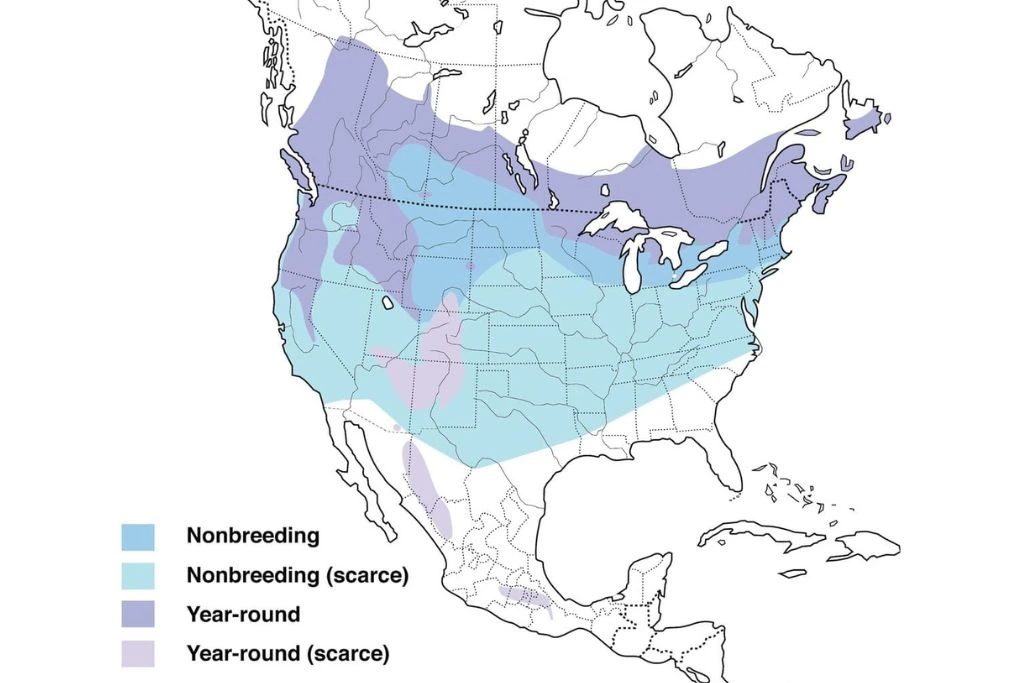
6. American Goldfinch
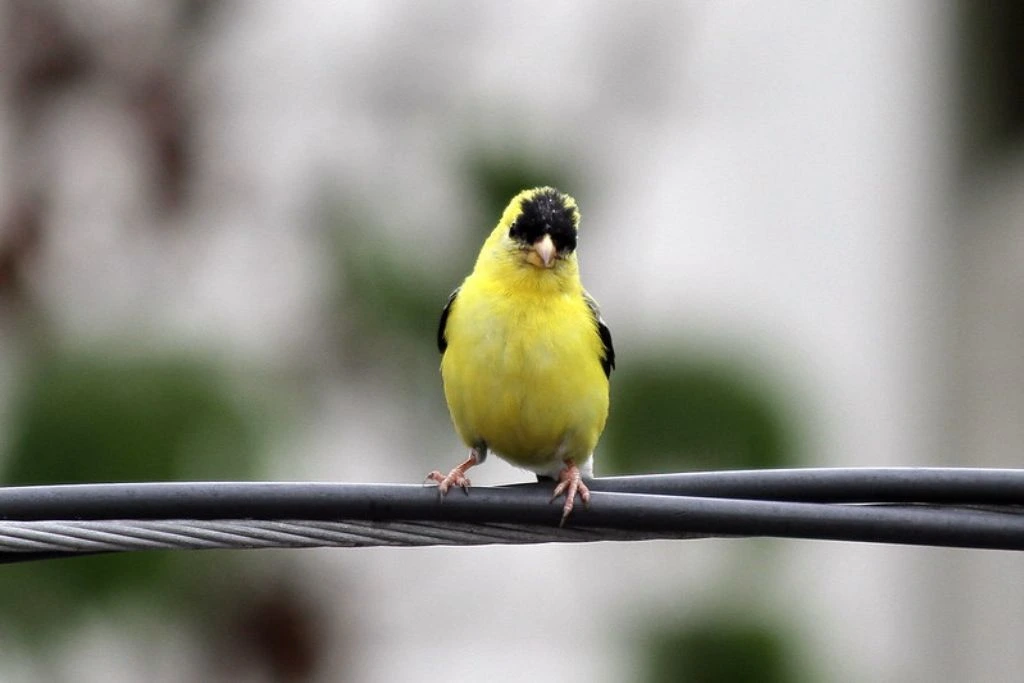
- Kingdom: Animalia
- Phylum: Chordata
- Class: Aves
- Order: Passeriformes
- Genus: Spinus Koch
- Species: Spinus tristis
- Length: 4.3-5.1 in (11-13 cm)
- Weight: 0.4-0.7 oz (11-20 g)
- Wingspan: 7.5-8.7 in (19-22 cm)
Most of Texas sees the American goldfinch frequently in the winter, but it will have a more subdued brown tint. Texas residents can still enjoy this lovely bird through its winter attire, even though they might not see its full yellow beauty during the summer. American goldfinches congregate on feeders and weedy fields and move in flocks.
They communicate while flying and draw attention to their dynamic flight patterns. They can be identified by their calls, which have a distinct cadence and sound like the word “potato chip.” During the cold season, you can commonly spot them at bird feeders, where they like to eat the seeds from flowers, weeds, grasses, and shrubs.
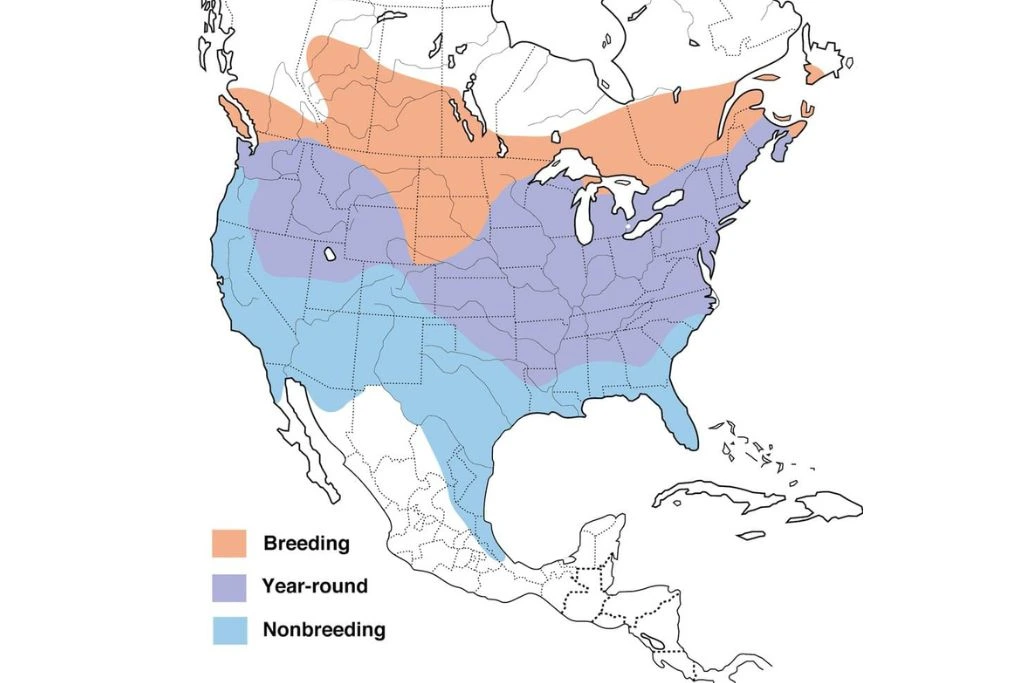
7. Pine Siskin
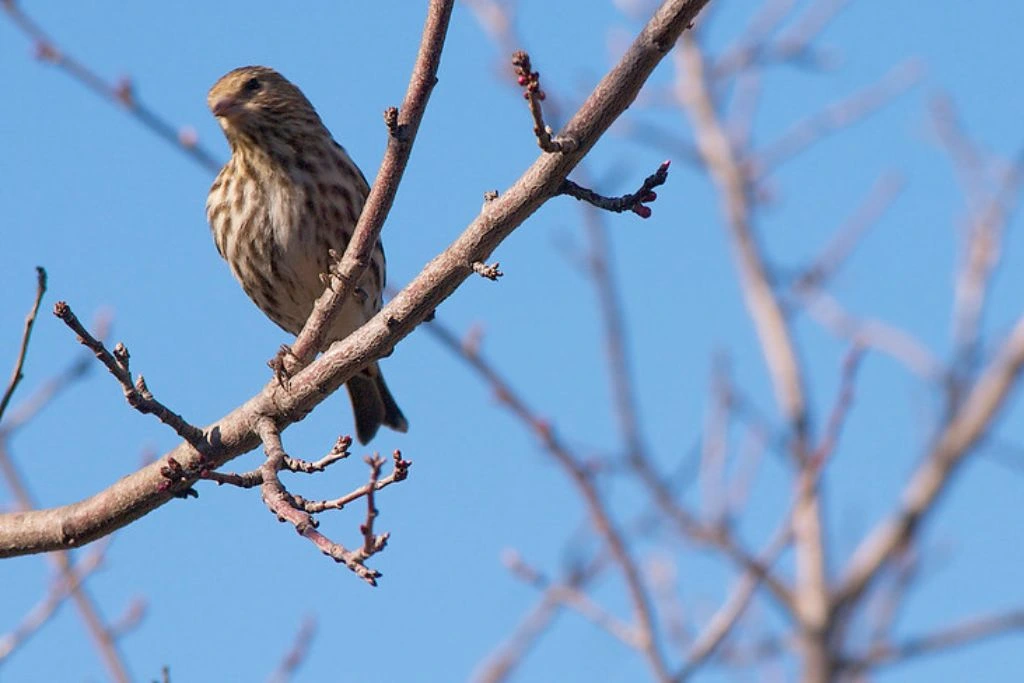
- Kingdom: Animalia
- Phylum: Chordata
- Class: Aves
- Order: Passeriformes
- Genus: Spinus Koch
- Species: Spinus pinus
- Length: 4.3-5.5 in (11-14 cm)
- Weight: 0.4-0.6 oz (12-18 g)
- Wingspan: 7.1-8.7 in (18-22 cm)
In Texas, pine siskins occasionally appear in winter. They may be hard to find in some years while, in others, they may be plentiful throughout the state. They may travel through Texas sporadically in the winter when you can spot them at garden feeders with nettle or Nyjer seed.
Try simulating these birds’ native habitat by setting feeders close to huge conifers and gnarly trees if you want to attract them to your backyard. Due to their characteristic slurp cry, you will likely see them grazing on the ends of branches in close groups while babbling nonstop to one another. They consume seeds, plant materials, and insects while residing in temperate and deciduous forests.
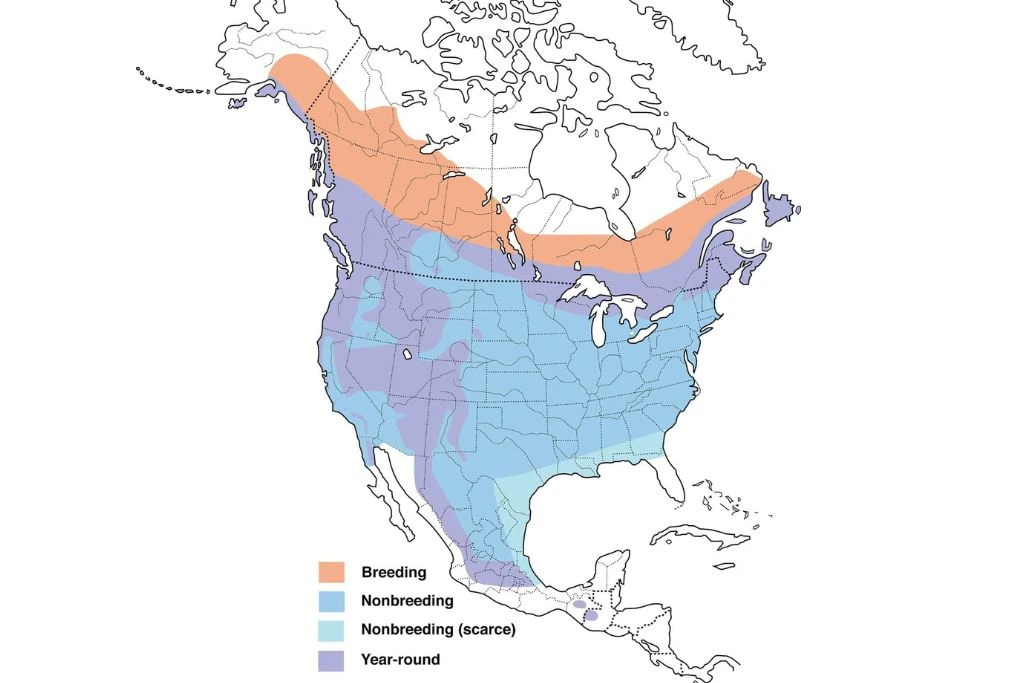
8. Red Crossbill
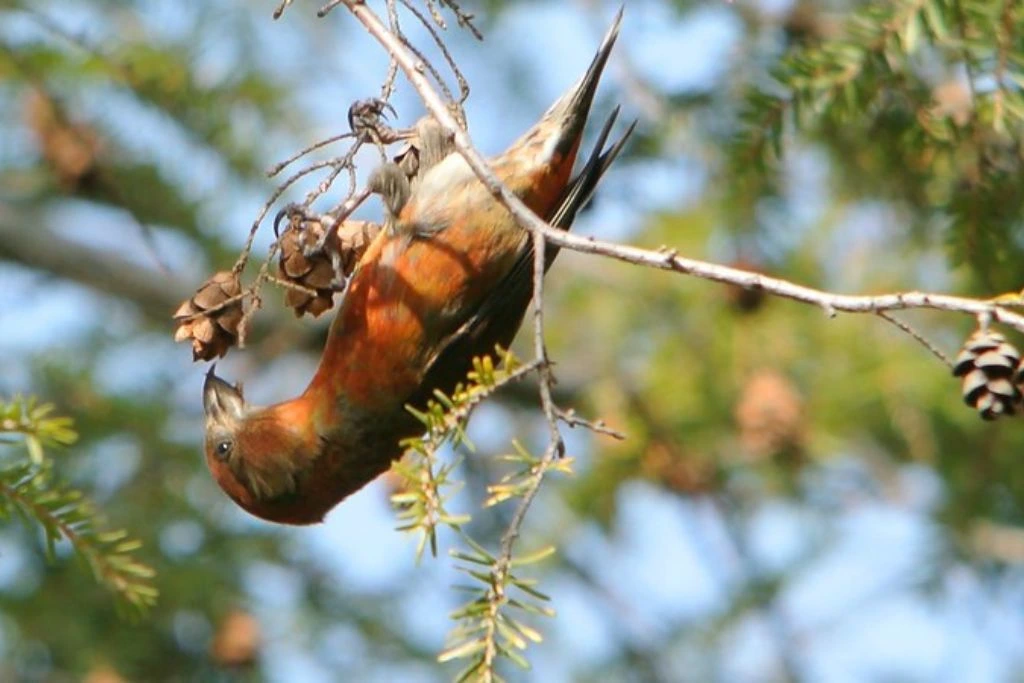
- Kingdom: Animalia
- Phylum: Chordata
- Class: Aves
- Order: Passeriformes
- Genus: Loxia Linnaeus
- Species: Loxia curvirostra
- Length: 5.5-6.5 in (14-17 cm)
- Weight: 1.4 oz (40 g)
- Wingspan: 10-10.75 in (25-27 cm)
Red crossbills are distinctive because they vary in size and appearance. Scientists estimate that there are approximately eight distinct species of red crossbills. Although uncommon in Texas, these short-legged nomads occasionally go from West Texas to East Texas during winter. Other than when they deviate from their intended path through all the backyards and cities of Southern states, they can be easily identified by their sharp “Kip-Kip” sounds when they soar over evergreen woods in the mountains.
Although they occasionally eat from feeders, they usually forage with their flocks from tree to tree. Platform feeders stocked with seed mixtures of sunflower, walnut, and fruit are the ideal method to draw these birds to the yard.
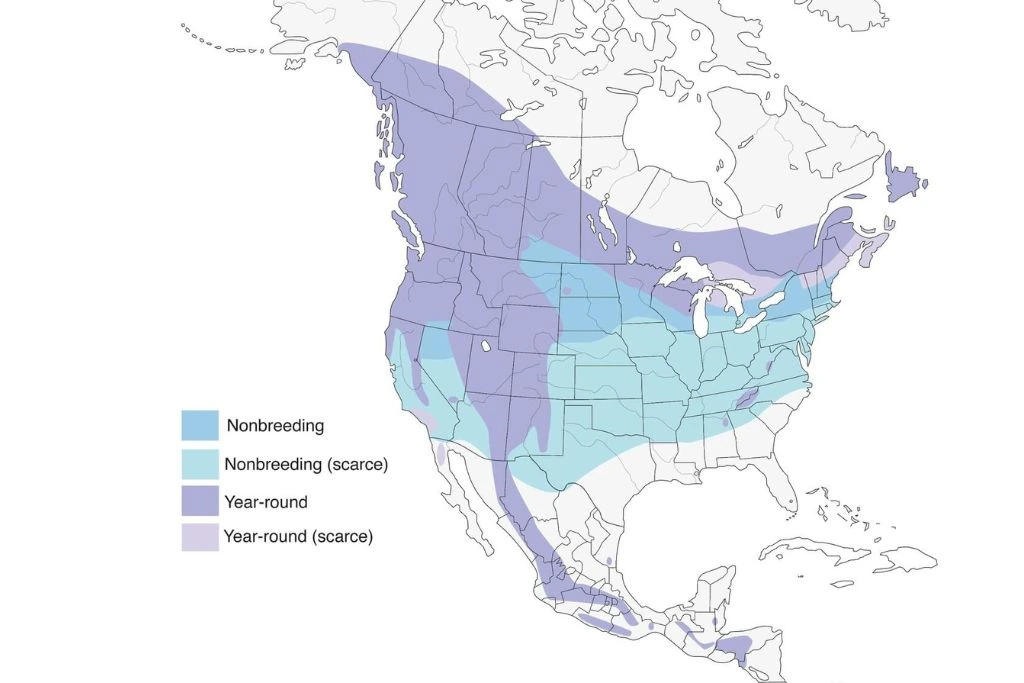
9. Purple Finch
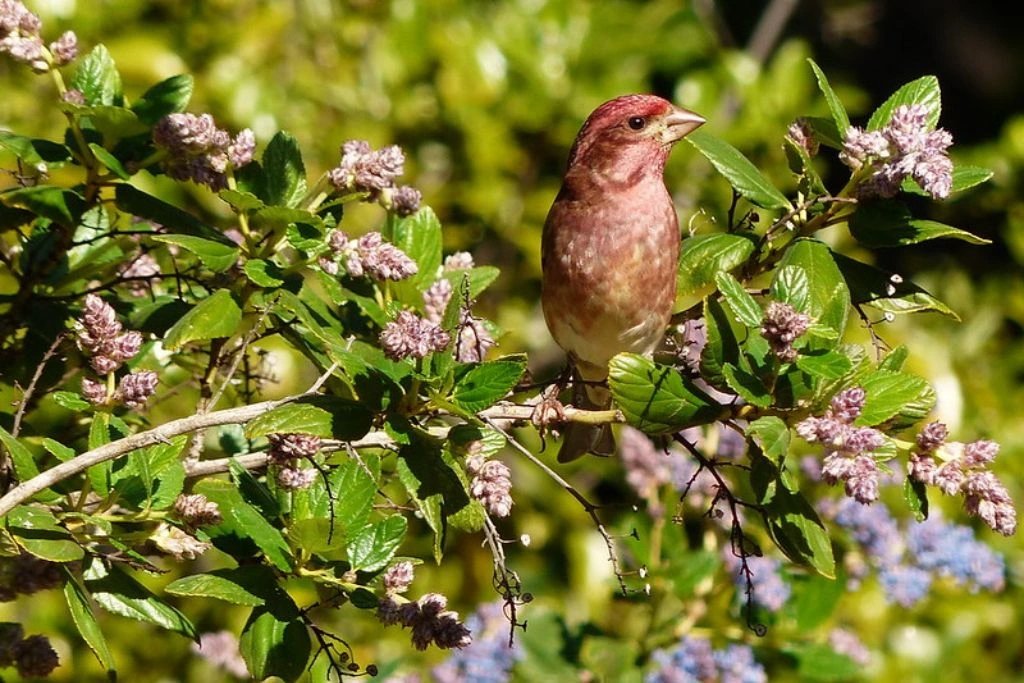
- Kingdom: Animalia
- Phylum: Chordata
- Class: Aves
- Order: Passeriformes
- Genus: Haemorhous Swainson
- Species: Haemorhous purpureus
- Length: 4.7-6.3 in (12-16 cm)
- Weight: 0.6-1.1 oz (18-32 g)
- Wingspan: 8.7-10.2 in (22-26 cm)
Occasionally, these large purple finches move to Central and East Texas regions during the winter. The purple finch is loud but difficult to see since it keeps up in the trees and is a pinkish-red tint. In winter, you can spot purple finches in shrublands, pastures, forest margins, and backyards. They breed in coniferous forests.
They prefer visiting feeders filled with black sunflower seeds and consume a variety of buds, berries, seeds, and bugs. Purple finches sing low, rich tunes from the tops of the trees, making them pleasant backyard companions. If your yard has pine trees, birdbaths, and salt sources, these birds are much more likely to visit.
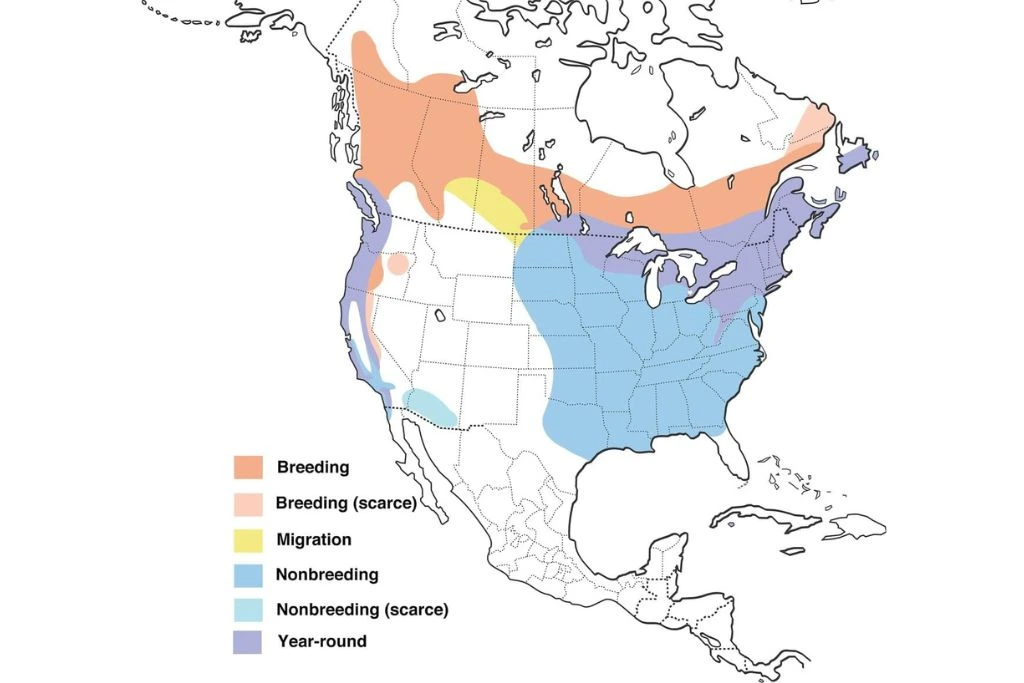
10. Lesser Goldfinch

- Kingdom: Animalia
- Phylum: Chordata
- Class: Aves
- Order: Passeriformes
- Genus: Spinus Koch
- Species: Spinus psaltria
- Length: 3.5-4.3 in (9-11 cm)
- Weight: 0.3-0.4 oz (8-11.5 g)
- Wingspan: 5.9-7.9 in (15-20 cm)
The lesser goldfinch spends its entire life in Texas, primarily in the central and southwest regions. The Edward’s Plateau’s Guadalupe Valley has a sizable population. These small finches have vivid colors, but if you’re still getting familiar with their twittering call notes, you might find it easy to overlook them. They breed in lightly wooded places, and you may find them in naked oak and American willow trees near streams and rivers.
They are renowned for congregating in large groups at once, where they eat seeds and grains at bird feeders or in weedy fields. Plant seed-bearing vegetation, such as asters, sunflowers, and thistles, to draw in this species. Some bird watchers swear by scattering vibrant flashes of yellow color across their patio and yard to attract birds.
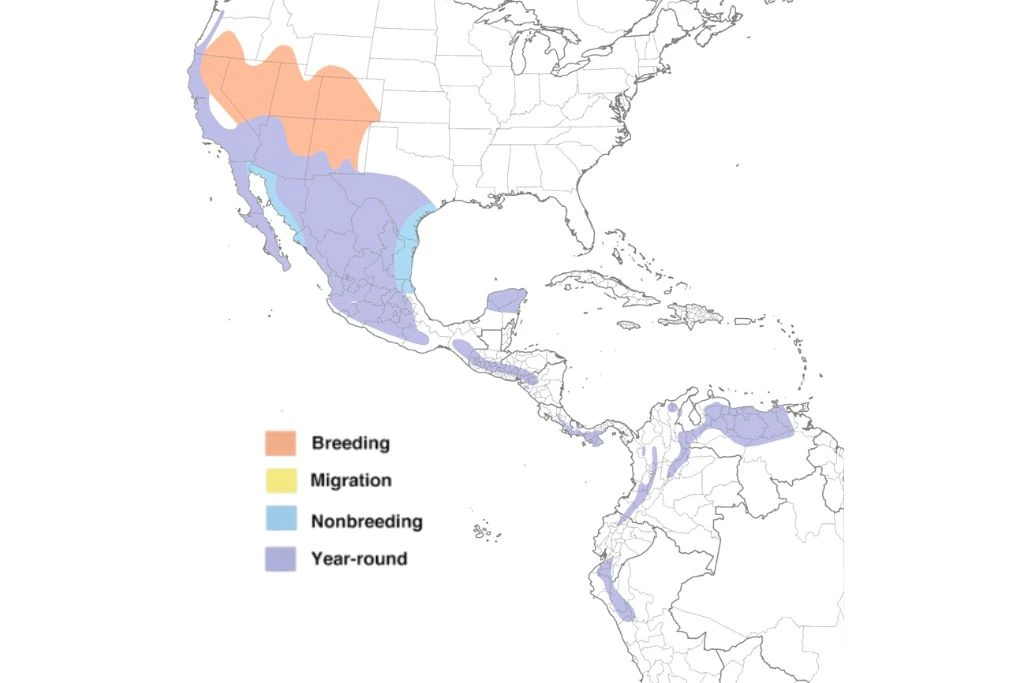
11. Cassin’s Finch
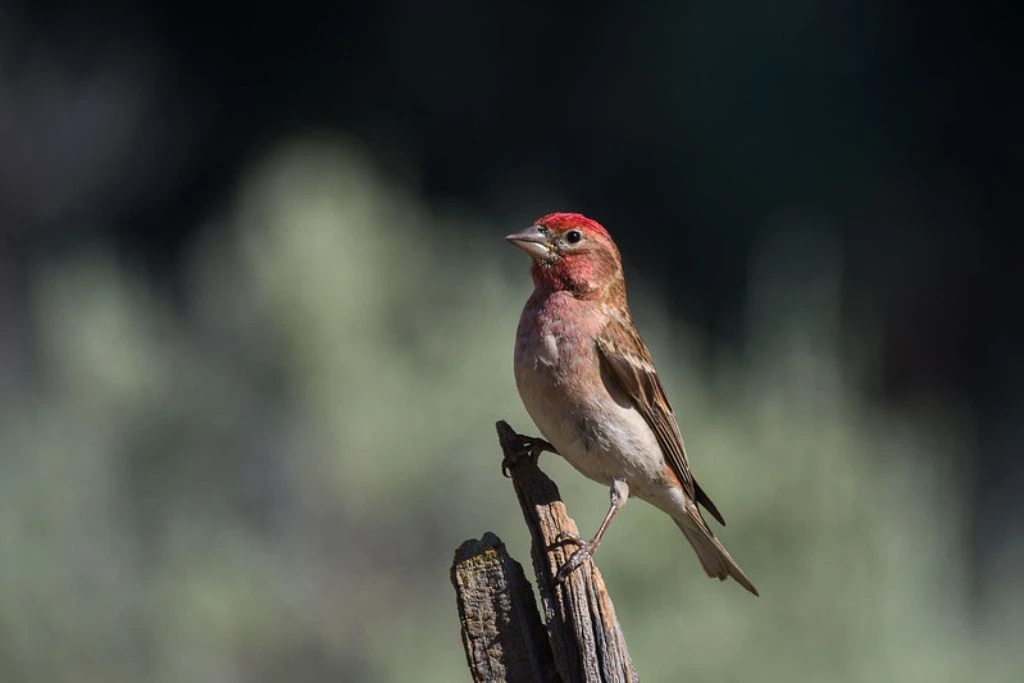
- Kingdom: Animalia
- Phylum: Chordata
- Class: Aves
- Order: Passeriformes
- Genus: Haemorhous Swaison
- Species: Haemorhous cassinii
- Length: 4.7-6.3 in (12-16 cm)
- Weight: 0.6-1.1 oz (18-32 g)
- Wingspan: 8.7-10.2 in (22-26 cm)
Although the Cassin’s finch is uncommon in Texas, there is a chance to see one throughout the winter months in the state’s western region. The only differences between this bird and the purple finch are its somewhat larger size and longer bill. It can be found in coniferous woods and mountains in Western North America.
During the summer, it stays at high altitudes, but it descends to lower altitudes during the winter and feeds on pine and tree buds. While it primarily consumes foliage, it will also eat berries and insects during the warm season. Listen to the male’s lovely “tulip” notes in his song, which might be difficult to understand because he mimics other birds.
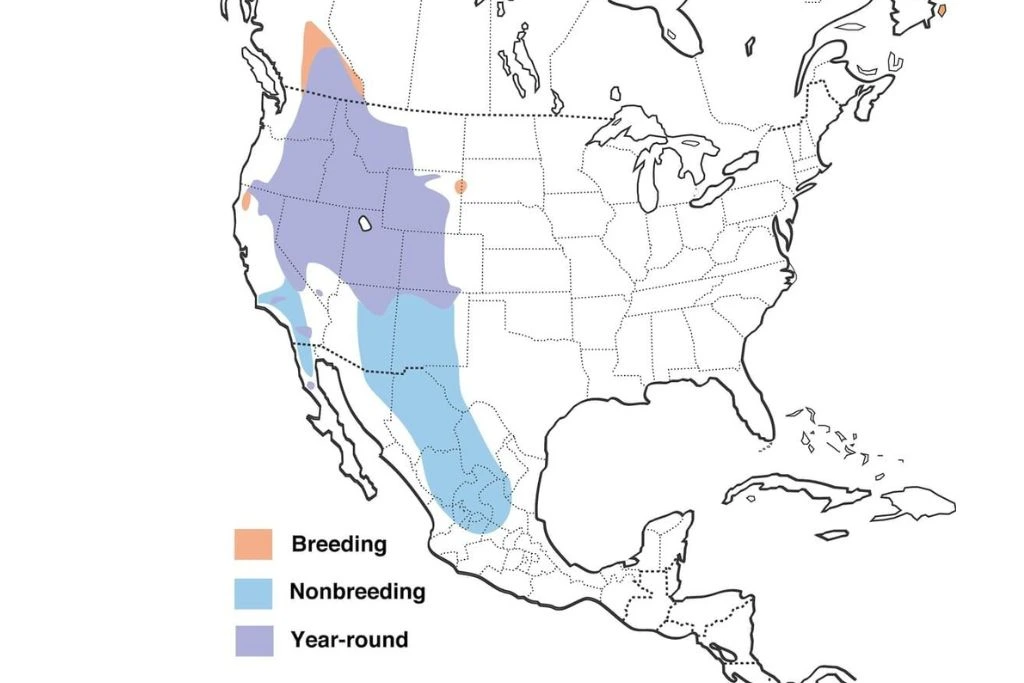
12. Pine Grosbeak
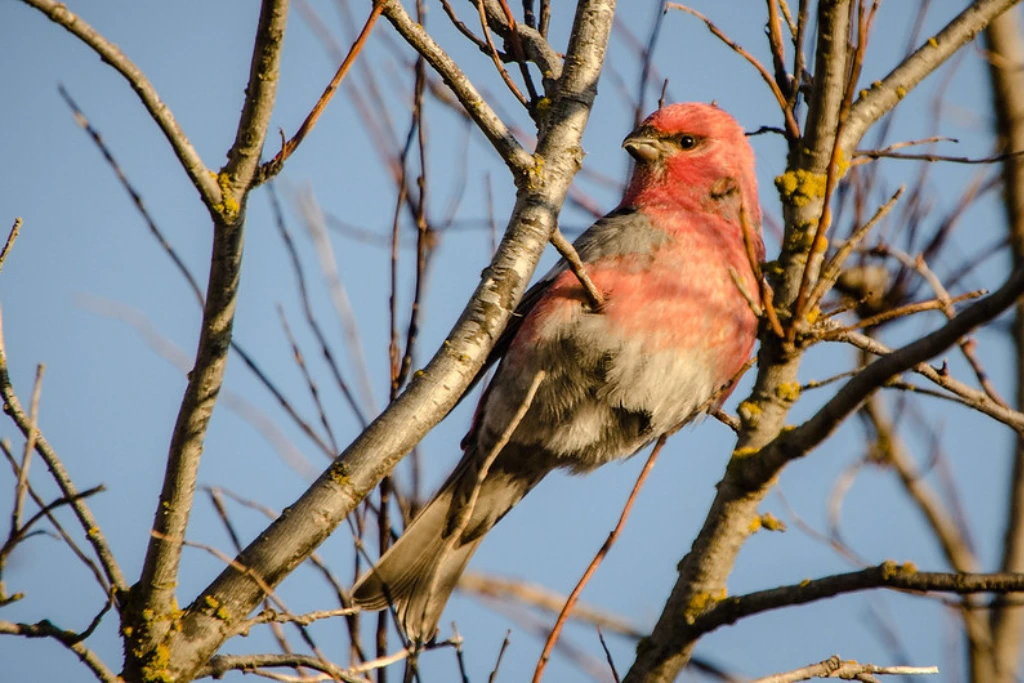
- Kingdom: Animalia
- Phylum: Chordata
- Class: Aves
- Order: Passeriformes
- Genus: Pinicola Vieillot
- Species: Pinicola enucleator
- Length: 7.9-9.8 in (20-25 cm)
- Weight: 2.01 oz (57 g)
- Wingspan: 13.0 in (33 cm)
In Texas, pine grosbeaks are an errant species that have only been recorded in Guadalupe Mountains State Park once, in 2000. Male pine grosbeaks are scarlet birds with two white wing bars and gray on the wings and tail. The heads and rumps of females are dull orange and gray. They are relatively sluggish and huge for finches.
They are usually prevalent in Canada, but some have been seen in the mountainous west, the Sierra Nevada in California, and the US-Canadian border. Pine grosbeak nests are often placed ten to twelve feet on a low tree. The nests contain two to five eggs from twigs, bark, weeds, moss, and lichen. The female incubates these eggs for around two weeks before hatching.
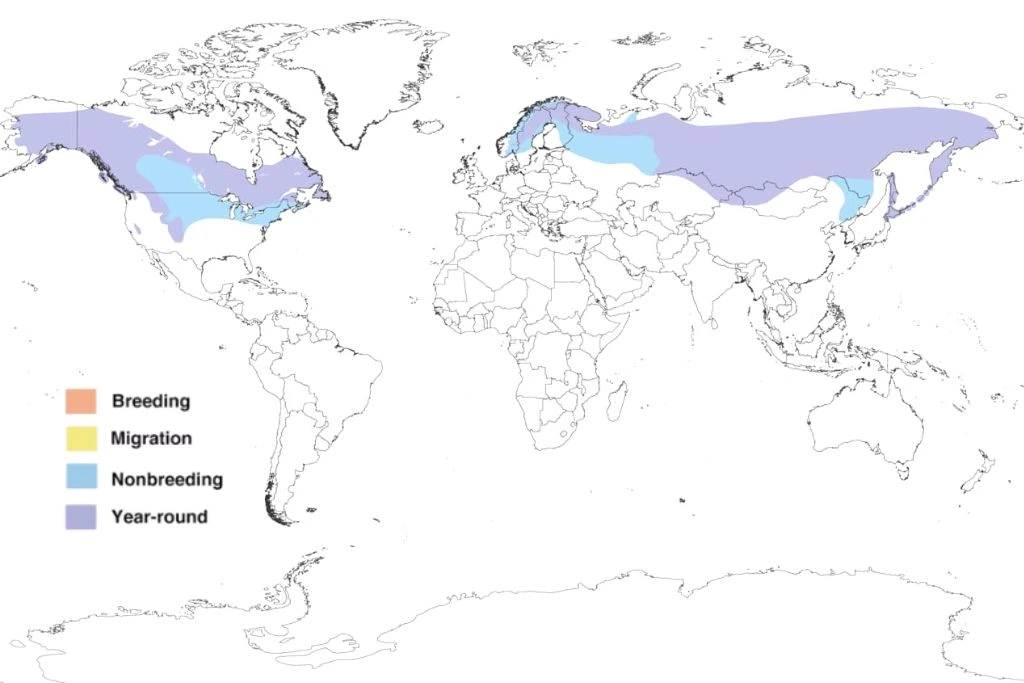
13. Gray-Crowned Rosy-Finch
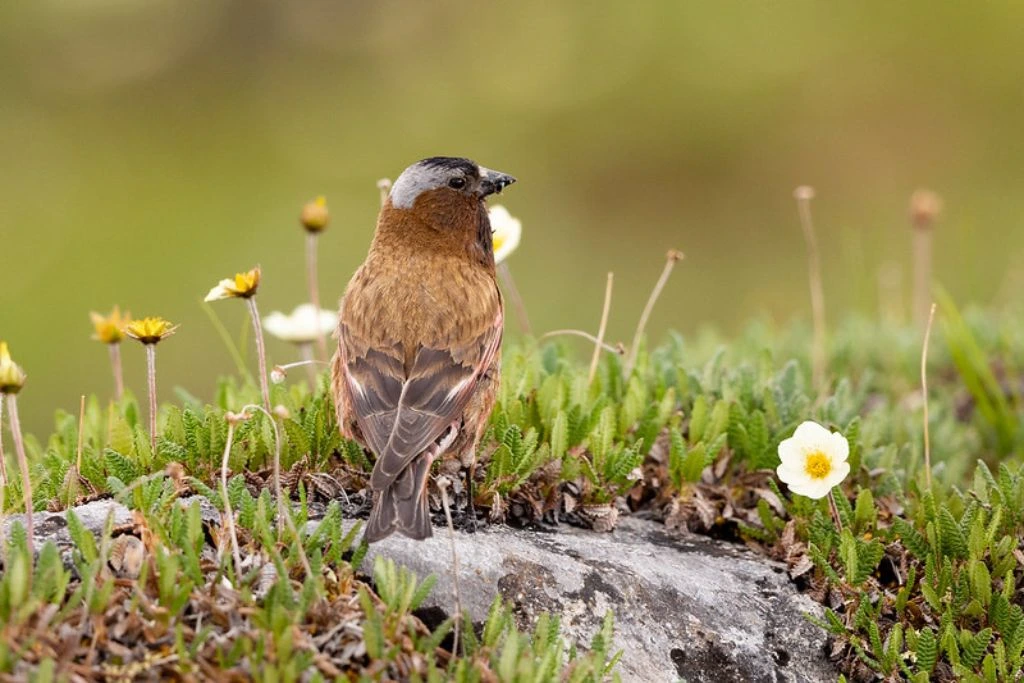
- Kingdom: Animalia
- Phylum: Chordata
- Class: Aves
- Order: Passeriformes
- Genus: Pheucticus Reichenbach
- Species: Leucosticte tephrocotis
- Length: 5.5-8.3 in (14-21 cm)
- Weight: 0.8-2.1 oz (22-60 g)
- Wingspan: 13.0 in (33 cm)
In Texas, gray-crowned rosy-finches are an incidental species first discovered in 2014 at Rita Blanca National Grasslands. Large and bulky, the gray-crowned rosy-finches resemble medium-sized birds. Adults can be recognized by their black forehead and neck, gray crown, brown body, and pink belly accents. Their bill is yellow in the winter and turns black when they are breeding.
Before wintering in the Western United States, gray-crowned rosy-finches nest in Alaska and Western Canada. They migrate into wide plains, valleys, and cities throughout the winter, particularly where bird feeders are present. In the summer, they forage for insects and worms frozen in snowy mountains, glaciers, and meadows. They consume weeds, mustard, and sunflower seeds in the winter.
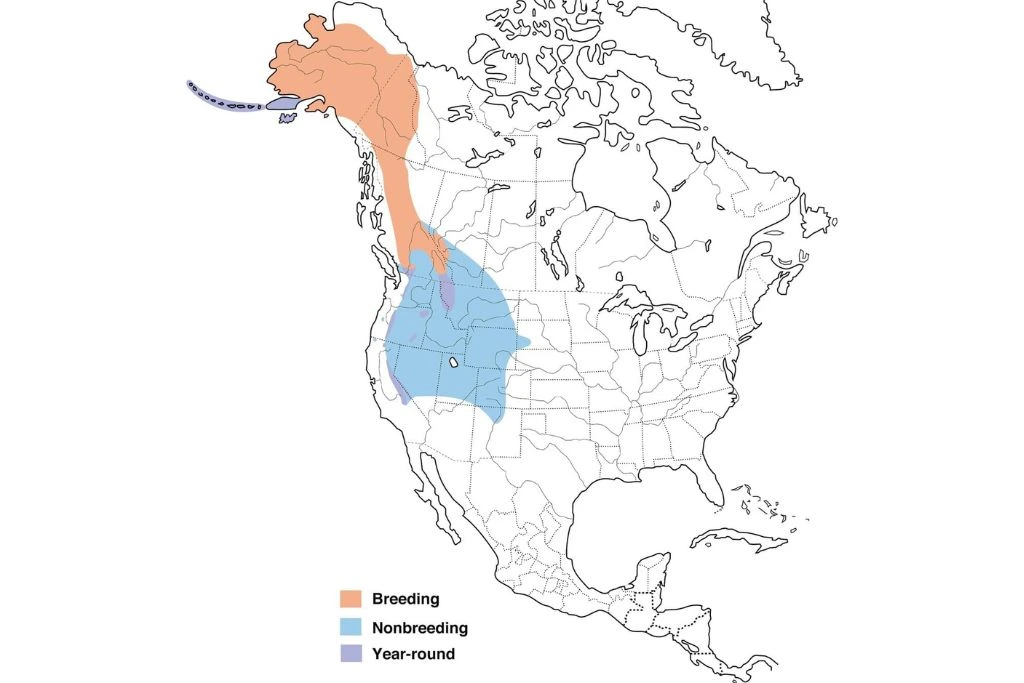
14. Lawrence’s Goldfinch

- Kingdom: Animalia
- Phylum: Chordata
- Class: Aves
- Order: Passeriformes
- Genus: Spinus Koch
- Species: Spinus lawrencei
- Length: 3.9-4.7 in (10-12 cm)
- Weight: 0.3-0.5 oz (9-14 g)
- Wingspan: 8.3 in (21 cm)
Lawrence’s goldfinches are considered incidental species in Texas. Small, roving songbirds, the males are immediately identifiable with a black vertical stripe running from the front of their heads to their chins. Their back, wings, belly, and breast are yellow, and most of their bodies are gray. The markings on females are comparable, although their color is a bit softer gray.
Breeding in California, Lawrence’s goldfinches go only a short distance south and east. Broad oak woodlands and perennial shrub regions are good places to look for Lawrence’s goldfinch, especially if there is a body of water nearby. They largely eat seeds. To get to them, they could even hang upturned from branches. Occasionally, they will forage for nourishment on the ground, consuming buds and insects.

Frequently Asked Questions
Which Finches Are Native to Texas?
Small brown birds called “house finches” are typical year-round inhabitants throughout much of Texas. Their tail is among the most intriguing in contemporary ornithology. The species used to live largely in Western North America and were stationary.
Do Wild Finches Exist in Texas?
Yes. The American goldfinch is widespread throughout Texas during the winter months. Most see the goldfinch frequently in the winter, but it will have a more subdued brown tint.
What Is the Appearance of a Texas Finch?
Males have a glossy black crown, white spots on the wings, and a bright yellow underside. Their black tails and backs may also be glossy black or occasionally dull green. Young males and females have two white bars on their black wings, pale yellow underparts, and olive backs.
Are Finches Present in Central Texas?
Yes. Although the house finch can be found across Texas, it is most common in the Panhandle, Central, and West Texas.
What Bird Is Famous in Texas?
Northern mockingbird. The voice of this gray and white bird could participate in any singing competition, making up for its uninteresting appearance.
What Kinds of Birds Are Most Prevalent in Texas?
Yellow-rumped warblers, ruby-crowned kinglets, and Eastern Phoebes are more frequent backyard birds in the summers of Texas, while mourning doves and white-winged doves are more frequent visitors in the winter. Most Texas backyard birds that might visit your yard or birdfeeders are listed above.
Can Finches Survive in Extreme Heat?
No. Canaries and larger finches can survive in the wild in temperatures as low as -8C. However, these are absolutes that should be avoided.
Why Are Birds Vanishing in Texas?
In reality, it was a widespread disaster. Food shortages due to a half-foot of snow and ice coverage were most likely major causes of the large die-off for the birds that remained or were unable to flee to warmer climates.
Are Purple Finches Native to Texas?
No. Purple finches tend to move to Central and East Texas during the winter.
Conclusion
The habitat in Texas is suitable for meeting the needs of many finch species. These songbirds now find the state a desirable place to live, owing to the mild climate. With large populations, it is anticipated that these species will be present all year round.
In Texas, the 14 different species of finches frequent garden-based bird feeders. It then enriches homes with its beautiful sounds in return.


